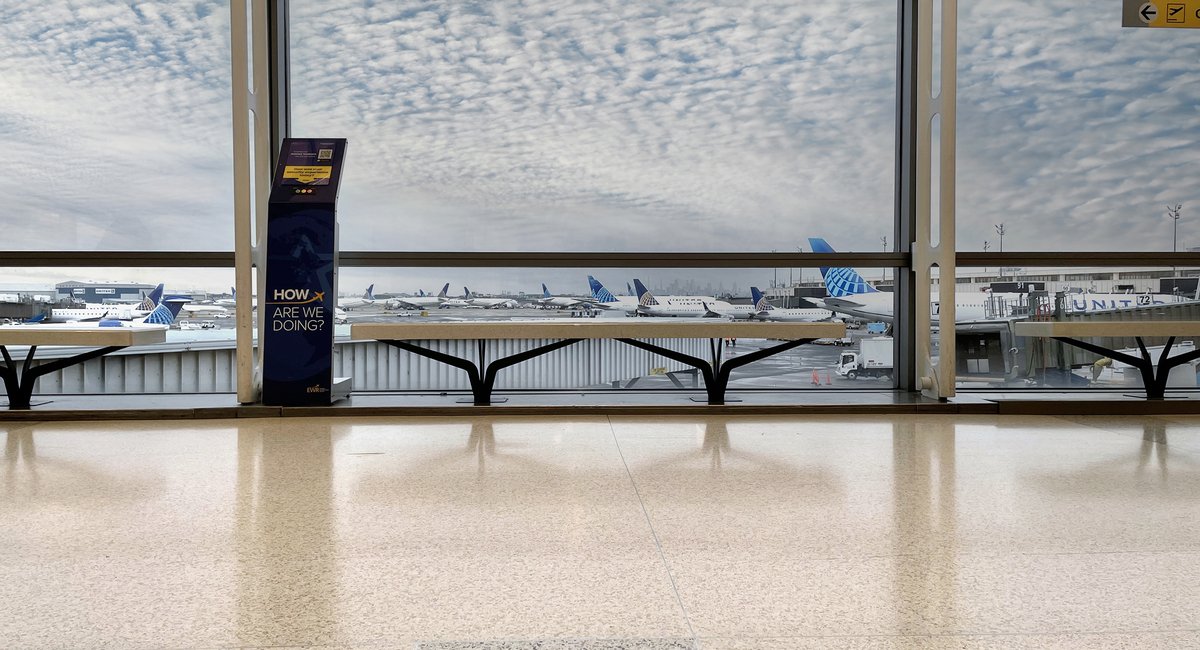The American Institute of Architects New York gave out its annual design awards Monday night. The awards are granted for “outstanding architectural design” in New York City, or by NYC-based architects.
Many winners are the type you’d expect to receive an architecture award — this year’s top honors included glitzy, high-profile projects like the new Perelman Performing Arts Center in Lower Manhattan.
The Perelman Performing Arts Center
Photo by Iwan Baan
Others are less obvious. The top honor in the “projects” category, for example, went to a series of new benches, just past security, at Newark Airport’s Terminal C.
“Design excellence is the purpose of this program,” said Jesse Lazar, the executive director of AIANY, who was not on the independent jury that chose the awards.
“Recomposure benches” designed by HNTB at Newark Liberty International Airport
Photo by Thomas L Grassi
“Design is of course about making something beautiful, but it’s also about solving problems,” Lazar said.
Founded in New York in 1857, the American Institute of Architects organized into local chapters 10 years later — AIA New York remains the oldest and largest in the country.
The jury described the Terminal C benches, by the Missouri-based firm HNTB, as solving a problem that anyone who flies will understand — getting past security with your shoes off, things strewn about, and finding nowhere to sit and get it all together.
This temporary cooling station in the Hunts Point-Longwood neighborhood of the Bronx was designed by Interboro Partners and honored for “design excellence at the smallest of scales.”
Photo by Dean Kaufman
“It’s not a huge social problem,” Lazar said. “But it’s a problem people experience in space, and the jury felt this project addressed it in a way that was sensitive, beautiful, attentive to detail, and effective. Sometimes it’s as simple as that.”
The jury also appreciated the design of the bench base, which rhymes visually with the columns of the new terminal itself.
“What comes across as simplistic unpacks a lot of richness to it,” the jury said.
Other honorees at this year’s event reflect how the field’s focus is widening beyond big-budget “starchitecture.”
Bedford Green House by ESKW /Architects
Photo by Michael Grimm
Bedford Green House I, an affordable housing project in the Northwest Bronx by the Manhattan firm ESKW/Architects, won a “merit” award in the architecture category in part for threading the needle of often-tricky financing dynamics.
“The jury felt this project was exemplary in its economy of resources,” Lazar said. “While being beautiful and interesting and making the most of the site it was on.”
More than half of the building’s 118 units are dedicated to formerly unhoused people, those impacted by mental illness and people living with HIV or AIDS.
The East Flatbush Library branch, resigned by LEVENBETTS was honored for its light-filled design.
Photo by Naho Kubota, library design by by LEVENBETTS
The “Citation for Intention to Resolve an Urban Problem” went to an unbuilt “proof of concept” project that would redesign the trash areas at NYCHA buildings.
Designer Grain Collective found that a third of all labor at NYCHA sites goes towards managing waste, often in unappealing and highly visible trash yards that front the building.
Their project, in partnership with NYCHA residents and staff, examines how to streamline waste management and return space to active use, while reducing the staffing requirements.
Mini Tower One by MODU
Photo by Michael Moran
The “citation for innovation in microarchitecture and urban planning” went to a family residential unit called Mini Tower One, which created additional housing on the rear lot of a multi-family townhouse in Brooklyn.
The Brooklyn-based architecture and design firm MODU, said on its website that the project added 30% more space to the building while requiring 12% additional energy.
It’s part of a larger, national trend of encouraging accessory dwelling units, or ADUs – which are small residential units tucked onto the lot of another home.
“If you adopted this approach, or some version of it, you could double the population without building a single street,” the jury said. “And maybe bypass the immensely complicated regulations about creating affordable housing, and help solve this pressing issue of housing in New York.”
“The universe of problems that architecture is consciously interested in solving has expanded over time,” Lazar said. “It’s not only since the pandemic that architects are interested in social problems, but it’s certainly sharpened in the last few years.”
The full list of winners is available at AIANY’s website.

Leave a Reply